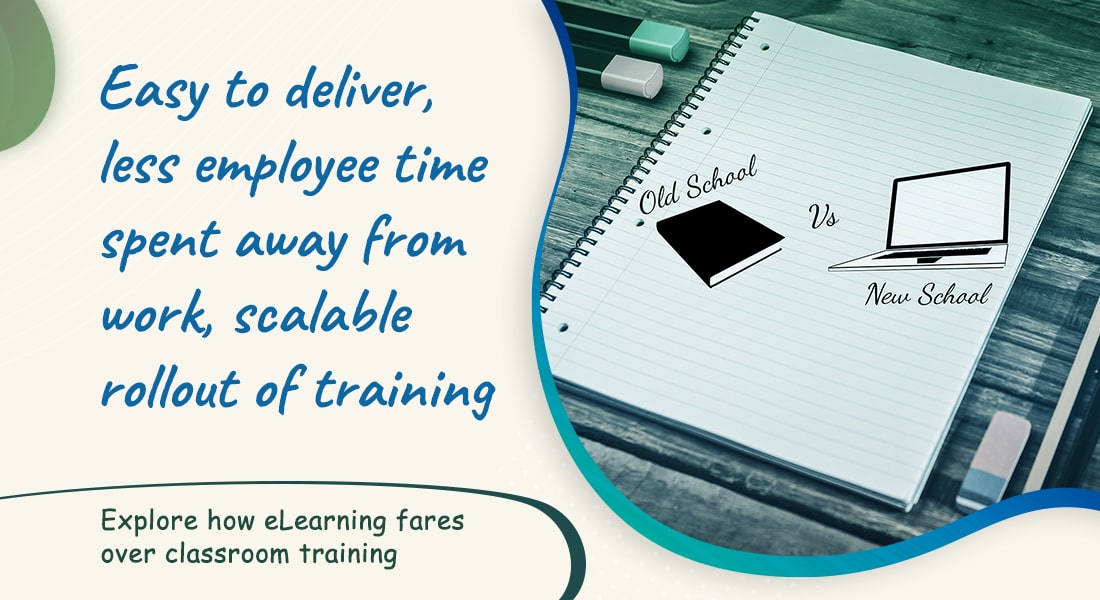E-learning Curricula: How Are They Making Online Training Better?
Check out this post to know how you can deliver highly effective training through online training curriculums.

E-learning curriculum is the entire gamut of learning activities that are packaged under a particular topic or subject matter. They are tailored with the purpose of a providing knowledge or skills to the employees that will enable them to do their jobs well. The focus is on long term skill development.
One does notice such curriculum when it comes to software skills such as MS Office Applications, Oracle, SAP or for that matter Six Sigma. The knowledge level required to use these applications differs depending on the job that an individual performs. Hence, it makes sense to divide the knowledge based on the skills required for a person to do his or her job.
Therefore, it is not surprising that most organizations are considering developing an eLearning curriculum that consists of a range of modules instead of a standalone eLearning course. The focus has been on developing competency based training packages.
So, what is an eLearning curriculum?
E-learning curriculum consists of a set of courses, resources and tools that enable employees to master a subject or gain a skill, so that they are able to do their jobs more efficiently. So, for example, a course for Sales and Marketing personnel could include the following modules:
- Segmentation, Positioning & Marketing Mix
- Marketing Planning
- Inventory Management
- Product Training
- Sales Presentation
- Selling Skills
Each of these modules could have units that provide in-depth knowledge of the subject. Employees could be given a time frame to complete all units and modules, after which they can be awarded certificates. E-learning curriculum has several advantages, both for the organization as well as for the employees.
In-depth knowledge transfer:
A curriculum format ensures that the subject is dealt with in detailed. There is no hurry to cram the course content into a 60 min eLearning course; which might result in eliminating some information. There is also more room for inclusion of formative assessments and learning activities that reinforce learning.
Learner-centric format:
As the entire subject matter is divided into short multiple modules, an employee does not have to commit to a longer stretch of time to devote to training. This is practical, considering today’s busy executives. Also, a single concept can be focused in a module. This provides enough time to the employees to understand and assimilate the knowledge that is shared without being burdened with information overload. Employees also get a chance to apply their knowledge and get motivated to move on to the next module in the curriculum.
Cater to varying levels of proficiency needed on the subject:
In a curriculum format, elearning courses are divided into modules which start from the basic concepts to more advanced concepts. In an organization, not all employees are required to gain advanced knowledge in a particular subject. For some, just a basic knowledge is enough to do their jobs. For others, an in-depth knowledge may be essential. When an e-learning curriculum is designed, it can be divided into Basic, Intermediate and Advanced to cater to different needs of employees.
Standardized format reduces development time and effort:
While developing an eLearning curriculum, you freeze your instructional design standards, visual design standards, media standards and other technical specifications early on at the developmental stage. This ensures there is a standard framework, which serves as a guide for the course. So, even if there are multiple people working on the course, the output is consistent. E-learning curriculum thus has a procedural advantage that greatly improves efficiency, and it results in quality output while reducing developmental time.
Effective design of course content:
The subject matter experts (SMEs) get to develop the content with an holistic view. This ensures the course has better content flow. Learning objectives for each module and the entire online training course can be carefully crafted such that the content is aligned to the learning objectives at the module as well as course level. More formative assessments can be given throughout the course ensuring that the employees are tested often, enabling them to review their understanding and giving them an opportunity to revisit the content in case they have doubts. Additionally, more interactivities can be included making elearning course content engaging and appealing to the employees.
Reduction of costs:
The cost and effort of developing a elearning curriculum is relatively low. This is because, the Subject Matter Experts (SMEs) need to put almost the same amount of time to develop the course. At the same time, learners also can better plan and utilize their time, as the digital courses do not demand them to allocate a large chunk of their time. They can devote just 20-30mins in a single session and yet obtain considerable knowledge, which progressively increases as more modules are taken.
Better training evaluation:
It is relatively simpler to monitor the progress of an individual employee based on the assessments. It is easy to format, score and evaluate the results of the assessments. This also helps to evaluate training and identify which parts require further development or which portion of the curriculum needs improvement. This is possible through reports that can be generated at different stages.
In short, curriculum based eLearning spreads out the learning effort that an employee needs to make over a period of time.This ensures that there is no information overload. Knowledge is shared in small chunks, enabling better assimilation and longer retention. All this with more or less the same effort and time. Therefore, it is a good idea for organizations to think in terms of eLearning curriculua instead of lengthy stand-alone eLearning courses that might not be successful in retaining the learner’s interest for a long period.





